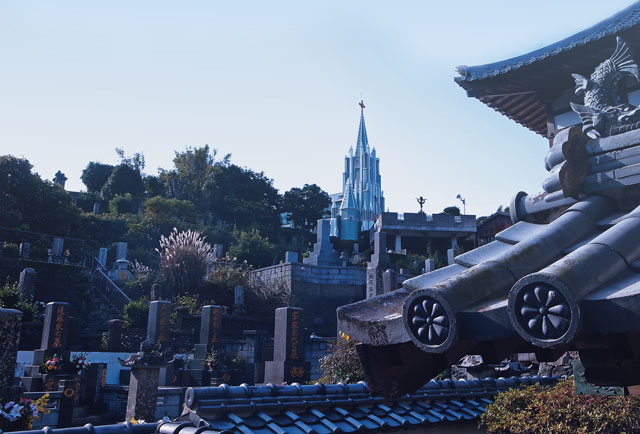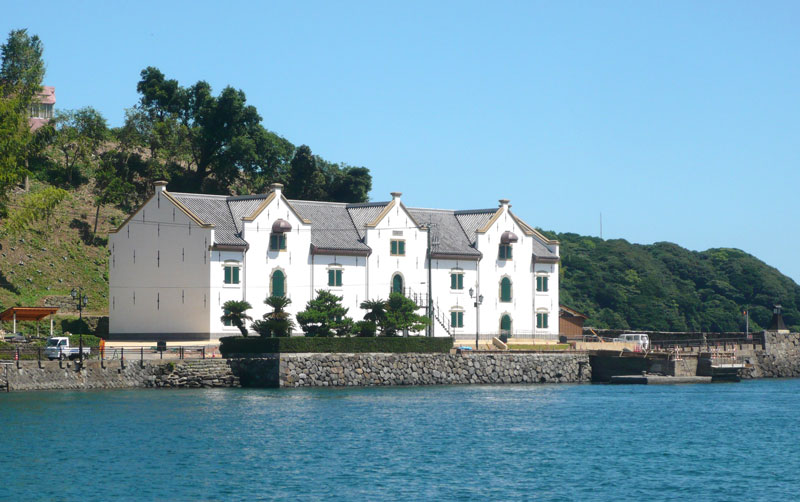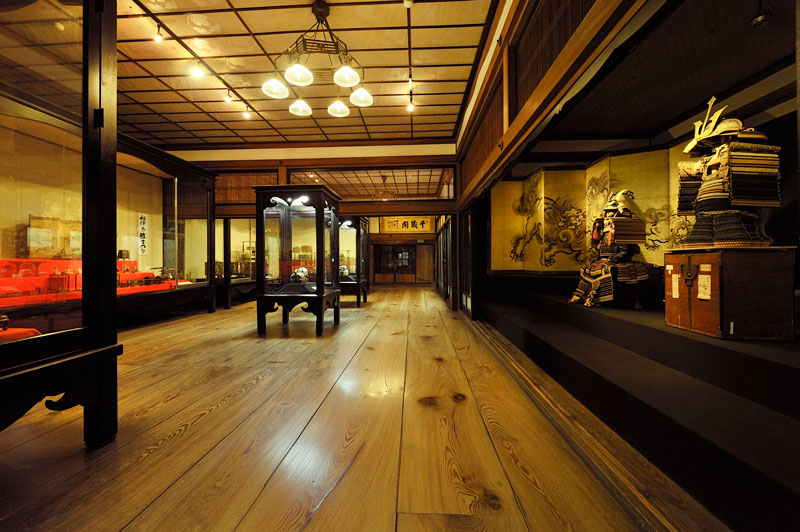Driving across a long red bridge, leaving Kyushu’s mainland behind, we found ourselves on the way to Hirado.
By James K. Toda
The Hirado O-Hashi, finished in 1977, looks a lot like San Francisco’s Golden Gate Bridge. It might be obvious where the architects got their inspiration, but it is still an impressive drive over the waters. The bridge is a recent addition, but the island’s history dates back centuries. Long before the age of great bridges, in 1550, a while before the Tokugawa Shogunate closed Japan’s doors to the West, Hirado became the nation’s first port of trade with Europe. Nagasaki’s Dejima is best known for becoming Shogunate-era Japan’s one port of trade with the West, but it all started here, in Hirado.
Arriving on the other side of the bridge we are greeted by the pointed spires of a tall green church: the St. Francis Xavier Memorial Church, named after the first Jesuit missionary to come to Japan. Hirado, along with smaller surrounding islands, was home to Japan’s largest number of hidden Christians. Seen as a politically destabilizing force, for roughly 250 years Christianity was outlawed and practitioners were put to death. Despite this, Hirado’s hidden Christians passed down the stories and songs of their faith from one generation to the next. Today though, Christianity and Japanese Buddhism and Shinto coexist on the island. Walking past Shojuji, Komyoji and Zuiunji Temples, we take in a view that symbolizes Hirado—St. Francis Xavier Memorial Church’s spires and cross as backdrop to the temple’s tiled roofs.
Driving north through the Kawachi Pass, we find an overlook and stop to stretch our legs on the nearby hills. Within minutes of walking it felt like being transported to the grassy hills of Switzerland. While the elderly hiker we met on the trail had nicknamed the hilltop view “little Aso” after the mountain in central Kyushu, we decided to think of it as “little Appenzell.” Refreshed from our stroll through the hills of Kawachi Pass, we continued to the northernmost end of Hirado. It is here that, a millennium before trade with the Dutch, Japanese emissaries left for the Chinese court in 600 AD. A nearby statue commemorates the famous monk Kukai who, two hundred years later, stayed here on his way to China.
To the west of Hirado is the smaller Ikitsuki Island. This mountainous island’s rocky cliffs offer stunning views of the sea below. The highlight of these is the Shiodawara Cliffs. Stretching for 500 meters along the coast, with rock columns and formations reaching up to 20 meters high. It reminds us of Hawaii’s Little South Point, but the drive, the history, and the isolation makes the Shiodawara Cliffs something altogether different—the kind of view that needs to be felt as well as seen.
While our travels have given us a glimpse of Hirado, we barely covered a third of the island. There is so much more here to do, to see, to learn—Hirado Castle, the Dutch Trading Post, Ikitsuki’s churches. But now, stomachs empty from a day of travel, we get back in the car to drive to our hotel, wondering what local delicacies they have in store for us. Will it be the area’s top-grade flounder? Marbled Hirado beef? Fresh lobster? We look forward to finding out, secure that anything drawn from these local waters or fed by the island’s grasses will be a delicacy worth waiting for.
Hirado’s Dutch Trading Post: Rebuilt from History
The Dutch Trading Post in Hirado was once a bustling hub of East Asian trade. In 1609, the Tokugawa shogunate permitted the VOC (Dutch East India Company) to trade with Japan, and the Dutch Trading Post was constructed under the guidance of Matsura Takanobu, lord of Hirado. According to descriptions from the diaries of trading post captains, the VOC started out renting one building, but as trade grew they gradually expanded their facilities during the first half of the 17th century. The especially large warehouses built in 1637 and 1639 stood as symbols of the VOC’s booming trade.
It may have been that the trade was a little too successful, because on November 9, 1640, by order of Shogun Tokugawa Iemitsu, all Dutch buildings in Hirado, including the gigantic warehouse, were destroyed. The buildings remained lost to history for more than three centuries.
The first steps toward reconstruction were made in 1922, when the site—which included the original Dutch Wall, Well, and Wharf—was recognized as a National Historical Site. But it was not until some 50 years later, in 1978, when full-scale excavations finally started, and a collaborative effort between the government and the private sector was launched to rebuild the trading post. But with no blueprints or designs to be found, the reconstruction team faced a huge hurdle.
But thanks to the Dutch East India Company’s detailed records keeping, as Yoshiharu Okayama, Director of The Dutch Trading Post in Hirado, explained, some aspects of the construction process were made clearer: “The Dutch accounting and audit system of 17th century was incredible. Detailed records and figures are written and kept in the Netherlands. The sizes of wood building materials, and their number, notes on bricks (their size, and number), and steel frames, were all written in those accounting books and it was so amazingly accurate.”
With the help of these accounting figures and records, as well as the drawings of the trading post that appeared in the Atlas Japannenis, published by the Dutch missionary Montanus in 1669, the building was erected. The Dutch Trading Post is now a historical fact, rather than something obscurely featured in historical records. You can feel—even practi- cally breathe—the history that comes through the monuments and articles on display inside the building.
Okayama is also director of The Matsura Historical Museum. The building and gardens, now a Prefectural Cultural Property, were constructed in 1893 by the 37th Lord of Hirado as a private residence called the Tsurugamine Villa. The general area, including the museum compound, has belonged to the Matsura clan since the Kamakura period (1192 to 1333), and Okayama explains that this part of Hirado was frequented by many European traders including the famous William Adams, known in Japan as Miura Anjin. One of the museum’s highlights in Kan-un-tei, a small tea house where the Chinshin-ryu tea ceremony has been practiced since the 17th century. For a small fee, you can sample a cup of matcha made in the traditional way as you gaze out on the grounds.
More Info
Hirado Dutch Trading Post: Address: 2477 Okubocho, Hirado, Nagasaki Prefecture 859-5102, Japan Web: hirado-shoukan.jp/english
Hours: 8:30–17:30 (Closed on Tuesday, Wednesday and Thursday on the third week of June every year)
Matsura Historical Museum: 12 Kagawa-cho, Hirado-shi, Nagasaki 859-5152 Tel: 0950-22-2236
Updated On July 21, 2017










